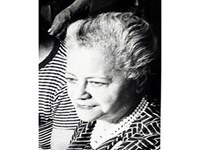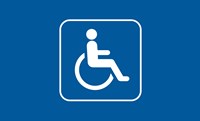- National Mall and Memorial Parks (31)
- Golden Gate National Recreation Area (23)
- Yellowstone National Park (21)
- Lewis & Clark National Historic Trail (18)
- Boston National Historical Park (14)
- California National Historic Trail (13)
- Oregon National Historic Trail (13)
- Cape Hatteras National Seashore (12)
- Grand Canyon National Park (12)
- Show More ...
- Geologic Resources Division (15)
- Wildland Fire Program (7)
- San Francisco Bay Area Inventory & Monitoring Network (6)
- Harpers Ferry Center (5)
- National Register of Historic Places Program (5)
- Archeology Program (4)
- National Historic Landmarks Program (4)
- Fire and Aviation Management (3)
- National Center for Preservation Technology and Training (3)
- Show More ...
Showing 627 results for bas relief ...
Hanka Homestead Museum
- Type: Place

The Hanka Homestead was occupied by members of the Hanka family, Finnish immigrants, from 1896 until 1966. Herman Hanka settled here with his family after he was injured in a copper mining accident. The farm was originally homesteaded at a time of mass immigration from Finland to the United States. The homestead is relatively intact and unaltered from its appearance in the 1920s. This museum is an official partner of Keweenaw National Historical Park.
X-10 Graphite Reactor
Jenny Lake Plaza
- Type: Place

Dive deeper into the history of Grand Teton National Park. Interpretive signs introduce topics like the Greater Yellowstone Ecosystem, grizzly bear research, geologic forces and features, glaciers, and the Hayden Survey. A large bronze tactile relief map will help orient you in relation to where you are in the park. Different peaks, canyons, lakes, falls, and other park features are labeled throughout the map.
Anna Arnold Hedgeman (1899-1990)
Access: Bass Harbor Head Light Station
- Type: Place
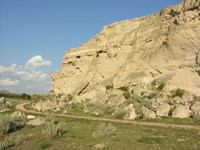
Following a day's journey from Fort Laramie, emigrants spent the night at Register Cliff , which rises one hundred feet above the North Platte River valley. The soft, chalky limestone rock made it easy for emigrants to inscribe their names into the cliff before continuing on their journey. The earliest signatures date to the late 1820s when trappers and fur traders passed through the area.
Soldiers of New Jersey Monument
The Legacy of the Port Royal Experiment
- Type: Article

Two-year summary of findings from amphibian monitoring in Naval Live Oaks Area of Gulf Islands National Seashore, near Pensacola, Florida. Treefrogs and other amphibians are monitored at two sites near freshwater ponds using PVC pipes and plywood coverboards. Amphibian community composition and changes in the relative abundance of common species are tracked over time as indicators of park ecological health.
Yavapai Geology Museum
- Type: Place
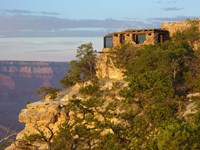
Open daily: 8 am - 7 pm. Yavapai Geology Museum offers one of the best vantage points for an overview of Grand Canyon geology. The building is right on the very edge of the canyon rim at Yavapai Point, The Museum Features: a bookstore and museum shop, large picture windows for viewing the canyon, and a variety of exhibits about the geology of Grand Canyon. Restrooms are in a separate building adjacent to the parking lot. The shuttle bus stop is also on the parking lot.
- Type: Place

On the right side of the memorial core, Eisenhower as the Supreme Commander of the Allied Expeditionary Force during World War II is commemorated by a bronze heroic-sized statue with sculptures of his soldiers inspired by the famous photograph with the 101st Airborne Division before their jump into France. Behind the sculptures is a bas relief depicting the Normandy landings on D-Day, June 6, 1944.
- Type: Place
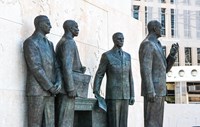
On the left side of the memorial core, the bronze heroic-sized statue of Eisenhower as 34th President of the United States places him at the center of the White House Oval Office flanked by sculptures of civilian and military advisors, symbolizing the balance Eisenhower struck between conflicting demands of national security and peaceful progress. The bas-relief global background depicts a map of the world symbolizing Eisenhower's role as a world statesman and preeminent inte
- Type: Place

One of the oldest public parks in Washington, D.C, the land was designated as a public park on the original 1791 L'Enfant plan for the city. During the Civil War, a temporary hospital, known as "Lincoln Hospital" was constructed on the site for wounded Union soldiers. Following the war, the army removed the hospital and Congress appropriated funds to improve the park with flowers, trees and pathways. Then as now, it remains one of the most popular city parks on Capitol Hill
Yaki Point Bus Stop - Kaibab Rim (Orange) Route
- Type: Place

Yaki Point is the only viewpoint on Desert View Drive that is closed to private vehicles. It can only be visited on foot, bicycle, or by taking the free Kaibab Rim (Orange) Route shuttle, departing from the Visitor Center Transit Terminal. Yaki Point is often a relatively quiet place from which to enjoy sunset or sunrise, with expansive views both to the east and west. Vault toilets are located here. Visit the link for the current schedule.
Cuba Vassall
- Type: Person

Cuba Vassall was the matriarch of a family that included abolitionists and community builders. As she navigated slavery and freedom in Massachusetts, Cuba advocated for her own and her family’s interests. In comparison with many formerly enslaved women of her era, Cuba Vassall’s life is relatively well documented.
The Tympanum (triangular area above the entrance of the memorial)
“A Soldier's Journey”
Black History at Big Thicket: Relying on the Landscape After Emancipation
- Type: Article

From July 1775 through April 1776, General George Washington used the abandoned Vassall House in Cambridge as his military headquarters during the Siege of Boston. In order to organize, administer, and command the army, Washington relied on his council of war, comprised of the senior-ranking general officers, and his "military family," comprised of the staff of secretaries and aides de camp at headquarters.


